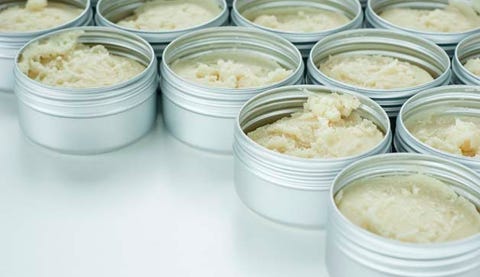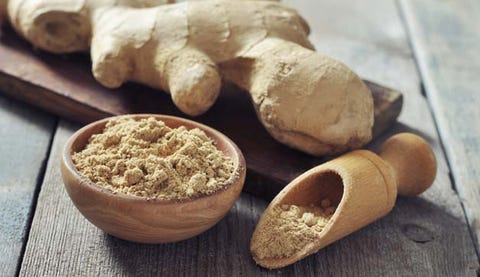how to fix dry chicken
Dry skin and winter go hand in hand. You could go through bottle after bottle of moisturizer trying to break that bond—or you could try these 7 effective natural options to target your biggest dry skin gripes.
(Brrrr) Ice to Stop the Itch
Dry skin often comes with a side of mild inflammation, a combo that results in major itchiness. And scratching can actually break the skin and leave you to vulnerable to infections and viruses. As unappealing as it may sound when temps are low, the most effective solution may be in your freezer. "Ice stops the itching almost immediately by numbing the area," says Rebecca Kazin, MD, a board-certified dermatologist based in Washington, DC.
Try it: Pop an ice cube out of your freezers tray, wrap in a soft washcloth and gently press it to the patch of skin giving you grief until you feel relief.
Shea Butter for Softer Skin

If you've ever thought drowning in butter would be a good way to go (no arguments here), this'll get you close. Shea butter melts at body temperature, so it absorbs rapidly into the skin, leaving it soft but not greasy, says Kazin. And its chemical makeup binds to water, meaning it pulls extra moisture out of the air and into your skin.
Try it: Find pure unrefined organic shea butter at a local health food store or online and smooth it on your body in place of a traditional lotion. It might take a little longer to sink in than lotion because of its ultra-rich consistency, but it won't sit on top of your skin as long as an ointment would.
Chickpea Flower to Exfoliate Flakes
The only thing worse than the way dry skin feels is the impossible-to-hide peeling that comes with it. Gently get rid of flakes with chickpea flour, which has a texture fine enough to avoid irritation while removing dead skin cells so it can soak up moisturizers and creams, says Kristen Ma, an ayurvedic practitioner and esthetician based in Toronto. You can pick the stuff up at any health food store, or order online ($10 for 4 lbs, bobsredmill.com).
Try it: Pour a quarter-size amount of powder into the palm of your hand, and dampen with water until it takes on a paste-like consistency. Massage onto damp or dry skin for a minute, then rinse off. Do this daily to deal with non-stop flakes, or if you only peel occasionally, use the scrub on an as-needed basis.
MORE: 20 Natural Home Remedies You Can Trust
White Vinegar to Heal Cracks
Anyone who's ever had a cracked heel knows that no amount of moisturizer is going to put that thing back together. But white vinegar can help. While the mechanism isn't entirely clear, vinegar is known to help wounds heal faster, so well in fact that dermatologists recommend it to patients recovering from laser resurfacing treatments, says Kazin. It also has antimicrobial properties to keep the crack from becoming infected while it's still open.
Try it: Pour two tablespoons of water out of a liter-sized bottle, add in two tablespoons of white vinegar, dampen a washcloth with the mixture, and let it sit on your skin for 10-15 minutes up to three times a day, following up with a moisturizing cream each time. (Check out 9 more genius ways to use vinegar for prettier skin and hair.)
Oats to Calm Irritation

Oatmeal may not sound like the sexiest irritation fix around, but it's one of the most effective. Oats are rich in mucilage, the substance that makes it sticky and plump when you add water and heat. It sounds gross, but the mucus-like substance actually soothes your skin, thanks to compounds called avenanthramides that help reduce inflammation, explains Jessica Hayman, ND, a naturopathic doctor based in Sedona, Arizona.
Try it: Process two cups of oats in a blender or food processor until it's finely ground and dump into a freshly drawn bath. (You'll want to cover your drain with a washcloth before letting the water out so it won't mess with the plumbing.) Soak for 20 minutes as often as you want.
Aloe Vera Gel for Intense Hydration
There's a reason this plant extract is everyone's go-to sunburn remedy. Aloe vera gel has a high water content on its own, but it's also loaded with water-retaining mucilage. Ma recommends preservative-free aloe vera gel made from only the inner fillet, or gooey center, of the plant's leaves, since it's less acidic than versions that include the leaf juice.
Try it: Smooth the gel onto just-cleansed skin every evening. Try Lily of the Desert's Aloe Gel Inner Fillet ($12, naturalhealthyconcepts.com).
Ginger Powder to Spur Circulation

One unexpected tactic to get your hydration back on track: spiking your next bath with ginger powder. Super-dry skin could the result of poor circulation, says Ma, and this ground root temporarily dilates your blood vessels to ramp up blood supply at your skin's surface (you'll experience it as a warming effect) and get your skin cells all the fluids and nutrients they need.
Try it: Draw your bath, hop in, and add a couple tablespoons of ginger powder before soaking for 15-20 minutes. "It can feel really tingly, so swish it around a bit and add more if you like the sensation," Ma says. "Personally, I use half a cup to a cup of the powder."
MORE: 7 Blissful Baths For Your Every Mood
Jessica Chia Jessica is a freelance writer and certified aromatherapist with an MBA from the University of Southern California.
This content is created and maintained by a third party, and imported onto this page to help users provide their email addresses. You may be able to find more information about this and similar content at piano.io
how to fix dry chicken
Source: https://www.prevention.com/beauty/a20449124/natural-remedies-for-dry-skin/
Posted by: ortegawhatife1996.blogspot.com

0 Response to "how to fix dry chicken"
Post a Comment